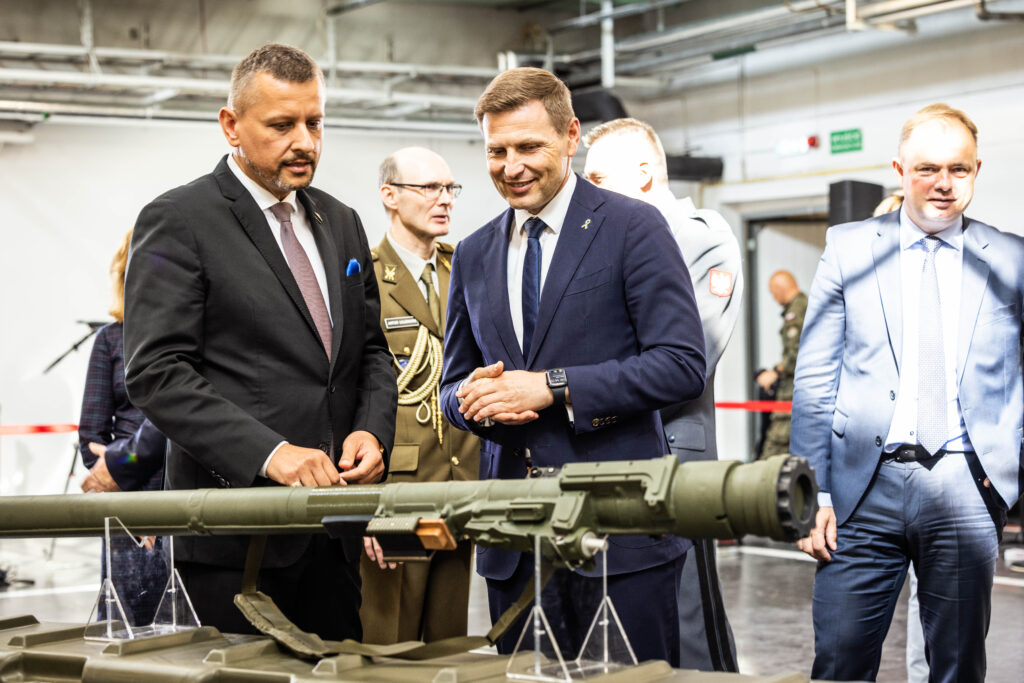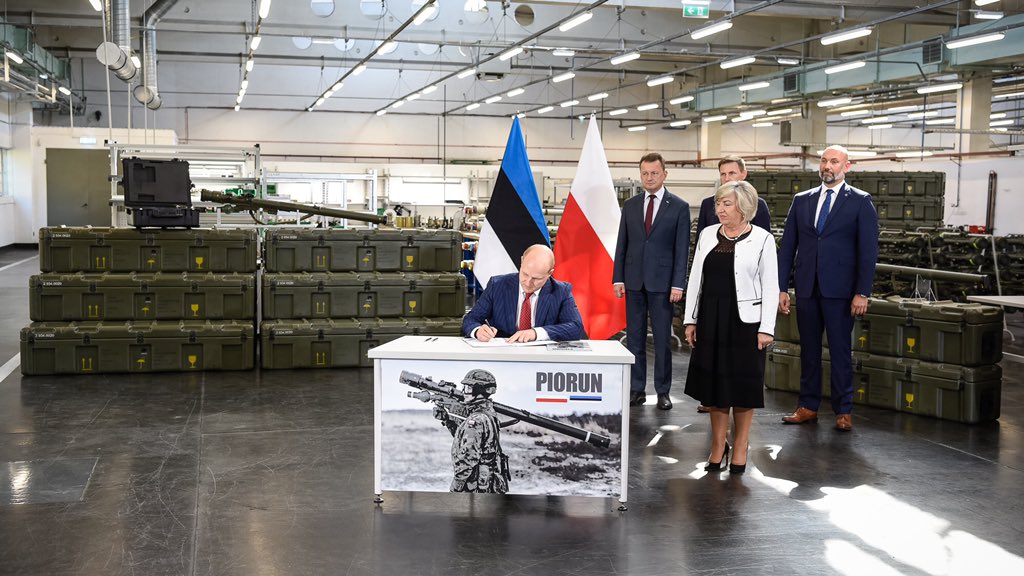Estonia and Poland are to jointly procure PIORUN short-range man-portable air defence systems, also known as MANPADs.
The Estonian defence minister, Hanno Pevkur, and the Polish national defence minister, Mariusz Błaszczak, on 7 September reaffirmed the need to strengthen defence cooperation between the two countries.
As a first practical step in that direction, within the framework of the ministers’ meeting, the Estonian Centre for Defence Investment and the Polish defence technology company Mesko signed an agreement for the Estonian-Polish joint procurement of the PIORUN short-range man-portable air defence systems.
The Estonian government allocated €103 million from the defence reinforcement package to strengthening air defence capabilities.
The benefits of the joint procurement include faster delivery and the technical fit of the Polish weapons systems, which for the region is an important aspect of security, the Estonian defence ministry said.

The system can be moved quickly and stealthily
PIORUN is an air defence weapons system developed in Poland and operational since 2019. It will be used in brigades and territorial defence units, which allows developing short-range air defence capabilities across Estonia. The first deliveries are expected in the second half of 2023 and the training will begin next year before the systems are delivered to Estonia.
It can hit targets from a distance of up to eight kilometres (five miles) and can be used both in the daytime and at night. The system is in use in Poland and Ukraine, where it has already proven its worth as one of the most successful weapons systems during the war in Ukraine.
The benefit of the weapons system is that it can be moved quickly and stealthily to areas at risk of a landing operation or to an area, where it is known that the enemy’s movements are covered by close-range air support from helicopters or fighters. In addition, the system is hard to detect and destroy for the enemy, according to the defence ministry.
“In essence, the PIORUN is a simple system that can be widely used by light infantry units and territorial defence units without needing extensive air defence training. Using the system doesn’t require various sensor systems either – it is enough for the soldier to visually detect the location of a flying object,” the ministry added.

